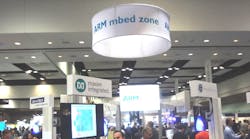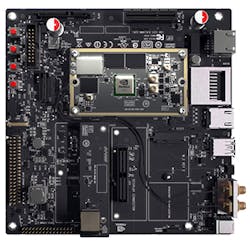Applications continue to demand more performance in smaller, more efficient packages. System-on-chip (SoC) solutions that blend GPU and CPU cores try to meet these expectations.
NVidia’s Jetson TX1 (Fig. 1) packs supercomputer performance into a credit-card sized module that is 50 mm × 87 mm. The module holds a TX1 SoC that is based on NVidia’s Maxwell GPU and ARM’s Cortex-A57 and Cortex-A53. The ARM cores support ARM’s big.LITTLE architecture (see “Little Core Shares Big Core Architecture” on Electronic Design). The Cortex-A57s share a 2 Mbyte L2 cache. The GPU has 256 cores that deliver 1 TFLOPS of performance. Performance is similar or better than an Intel Core i7 6700K Skylake CPU for many applications.
The module includes 4 Gbytes of LPDDR4 memory with a 25.6 Gbyte/s interface. A 16 Gbyte eMMC flash memory device provides built-in non-volatile storage.
The system supports 4K video encode and decode. It can also support 1400 Mpixel/s camera interfaces. For communications, there is a 1 Gbit Ethernet interface along with 802.11ac 2x2 Wi-Fi support. Bluetooth support is also available.
The Jetson TX1 plugs into a carrier board like the one pictured left, from NVidia (Fig. 2). The 400-pin carrier-board interface exposes peripheral support like a PCI Express Gen 3 socket plus SD card and m.2 sockets for additional storage. The carrier board and module are available in the Jetson TX1 Developer Kit priced at $599. The module alone is priced at $299. The system uses less than 10 W at 3.3 V.
The Jetson TX1 SDK supports CUDA 7.0. The SDK includes cuDNN, a CUDA-accelerated library for machine learning. It also includes the VisionWorks CUDA-accelerated library and framework for computer vision. This implements the OpenVX 1.1 specification and includes additional NVIDIA extensions. Drivers for OpenGL 4.5, OpenGL ES 3.1, and Vulkan are included.
Linux support is available for the Jetson TX1. It is ideal for a wide range of applications from robotics to gaming to automotive telematics.


